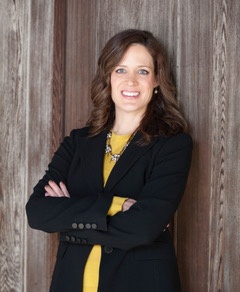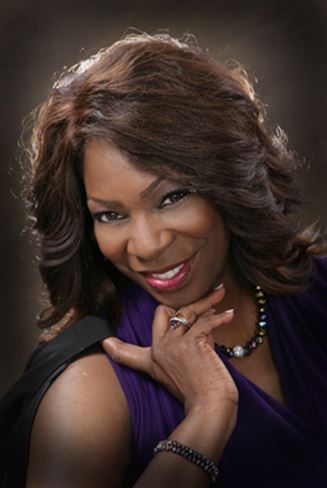

Prior to getting certified as a coach, Amy spent 13 years as a rising marketing executive and obtained her MBA. While in corporate America, she observed how stress often negatively impacted how people operated at work and at home. She vowed to commit her work to partnering with executives to help them ease the tension, leading to a more effective and authentic leadership style and better career decisions so both personal and professional goals are met.
Amy has been featured in Fast Company, Business News Daily, UpJourney and is about to be featured in Season Three of “This is SF,” featuring top, rising entrepreneurs in the San Francisco Bay Area. Amy has worked with clients from top companies such as Google, Johnson and Johnson, AT&T, Dell, Novartis, Blue Cross of California, Kaiser Permanente, and the US Coast Guard, among others.
You’ve made it to the top coveted position. And while society spends plenty of time portraying the glamour of being the top dog, what they don’t reveal is how lonely it can be at the top. If you’ve struggled with this yourself, rest assured, you are not alone. According to Harvard Business Review, half of CEOs express feelings of loneliness and of that group, 61% believed it hindered their performance. If you’re a first-time CEO, the likelihood that you’ll fall into this category increases.
One of the few studies conducted to examine work loneliness concluded that, in addition to being a private experience, work loneliness is also a social phenomenon, observable by an employee’s coworkers. It has a significant influence on employee work performance, both in direct tasks, as well as effectiveness. In short, the loneliness you experience not only feels lousy but it may wreak havoc on your effectiveness as a leader.
There are many reasons for this loneliness. When you’re at the top, people start to treat you differently. You now have the power to literally make or break people’s careers. That knowledge can lead people around you to act skittish in your presence, try to “suck up,” or avoid you as much as possible out of fear. Either way, you’ve gone from being one of the pack to the lone member in a league of your own.
You carry the weight of the company on your shoulders. When things go well, people pat you on the back. But when things turn sideways, people are quick to criticize. That’s a lot for one person to carry. And being CEO means you must maintain a certain air of confidence and clarity. So how do you gracefully shoulder this responsibility while still tending to your own human needs? I’ve pulled together some guidance to help you maintain your sanity while you run a thriving business.
Tip #1: Build an executive team that you know and trust
Ensuring that people will back you when you’re not in the room will put your mind at ease. If you’ve hand-picked your team, you’ve presumably already done this. But it’s rare to be given that opportunity. If you’ve inherited a team already in place, take the time to get to know each person and understand their motivations. By really listening to others and showing them that you are looking out for them, quid pro quo says that they will also look out for you. Having the title CEO certainly gives you clout and credibility but nothing can override the basic human need for acceptance and belonging. Find ways to connect with your VPs (and others in the company) to build mutual respect and allegiance.
Tip #2: Connect with fellow CEOs
No one can understand the burden you carry like someone else who wears your shoes. There are several CEO Peer Networks out there already and more popping up daily as people continue to understand the importance and value this can provide. Some of the largest networks that facilitate meetings between CEOs include the Young President’s Organization (YPO), The Chief Executive Network (CEN),Vistage,Entrepreneurs Organization (EO), and G100. There are also groups for specific groups, who may encounter unique challenges. A group designed specifically for female CEO’s isWomen’s CEO Roundtable. Find a group that works for you and start to connect with others who are experiencing similar challenges. In addition to helping to tackle the loneliness factor, you may find new, creative solutions to company challenges that you’re navigating.
Tip #3: Identify a trustworthy and neutral sounding board
You need someone you can talk to when times get tough. This trusted person should allow you to freely express yourself without being judgmental. This can be a mentor, an executive coach, a therapist, etc. It’s important to find someone who has no stake in the outcome- your spouse and co-workers can’t be 100% objective as your decisions often impact their wellbeing. They will ideally help you work through your challenges by asking the right questions and avoid telling you what to do. Once you have identified your trusted source, they can be your go-to when things start to reach a breaking point so you can work through complex situations in a safe space and make decisions that align with your values and unique leadership style.
Finally,a CEO-survival guide focused onloneliness would not be complete without an acknowledgement of the need to find time to recharge. When this topic (inevitably) comes up with my clients, it’s often disguised as regretfully lashing out, crumbling relations at home, or health conditions that pop up. Consider for a moment that, like a car, you have a tank. Instead of a tank filled with gasoline to keep you going, it’s a tank filled with self-care. The more you neglect this, the closer to ‘E’ your tank will get. And when your self-care indicator gets too low, this is the place where regrettable action (or inaction) happens.
Be sure to find ways to fill your tank. There are basic ways to do this that apply to everyone like getting enough sleep, finding time to connect with people you care about, and eating a balanced diet and getting exercise. For some people, heeding those needs are enough to avoid letting your tank get too low. For others, and in times when stress in particularly high, you’ll need more. The “more” I’m referring to is different for everyone. For some, it’s meditation. For others, it’s an escape to nature. Or maybe even just some quiet time to read a book of your choosing. A lot of my clients struggle with this suggestion. After all, if your tank is low, chances are you have very little, if any, free time (being overbooked often coincides with a low tank). But I guarantee, if you find time to fill your tank amongst the chaos, you will become even more effective and more productive. So,if you calendar time for self care (even ten minutes a day will suffice), your output will multiply, leaving you more time to get things done.
If you implement all the tips above, it’s likely that the loneliness you’ve been experiencing will dissipate, or at the very least, minimize significantly. You’ve worked hard to get where you are. Apply that same dedication and determination to ensuring that you have a long and healthy career as a CEO. Years down the line, when you’re retired and have time reflect on your experience, you’ll be glad you did.







Leave us a message
Subscribe
Fill the form our team will contact you
Advertise with us
Fill the form our team will contact you